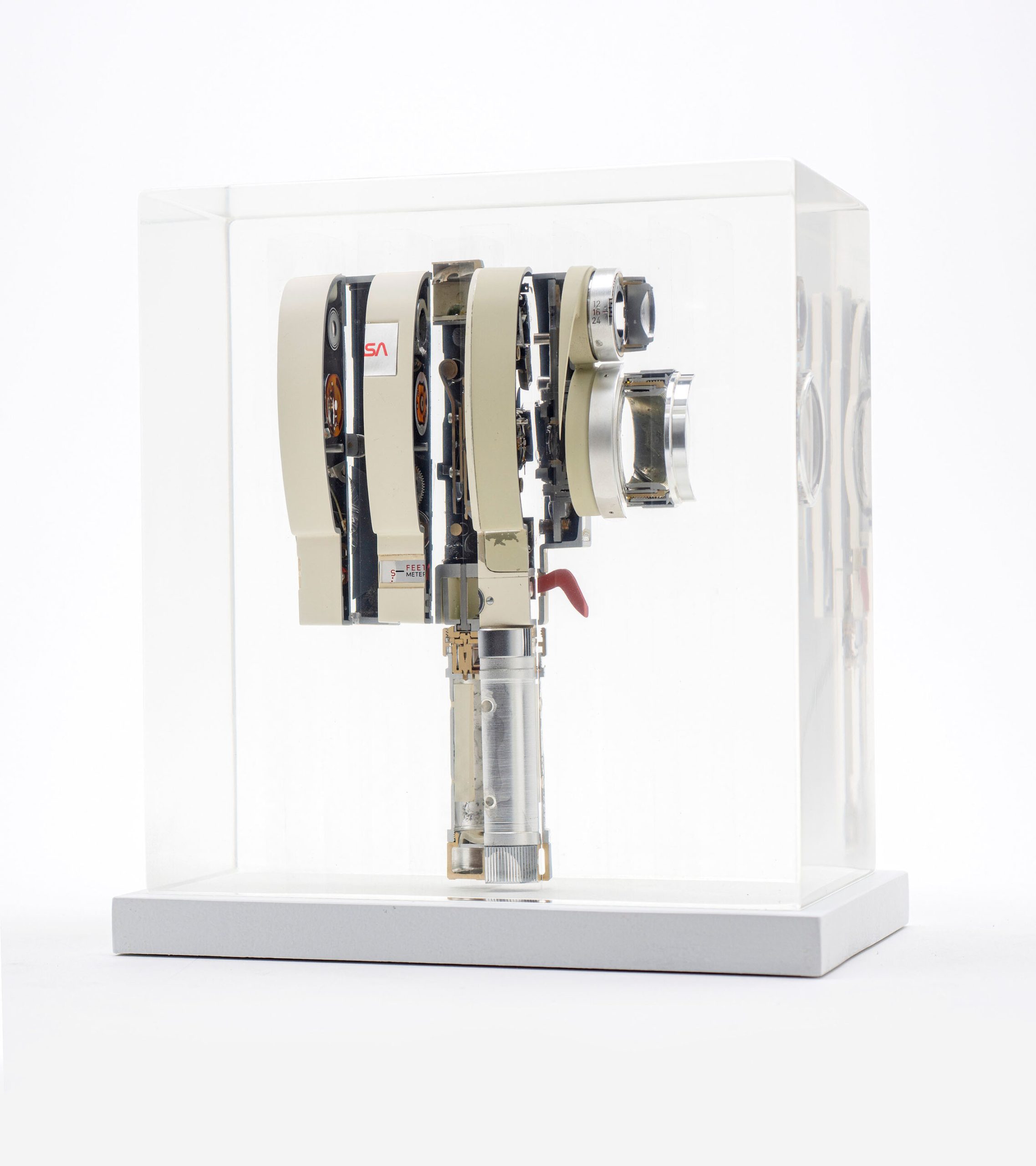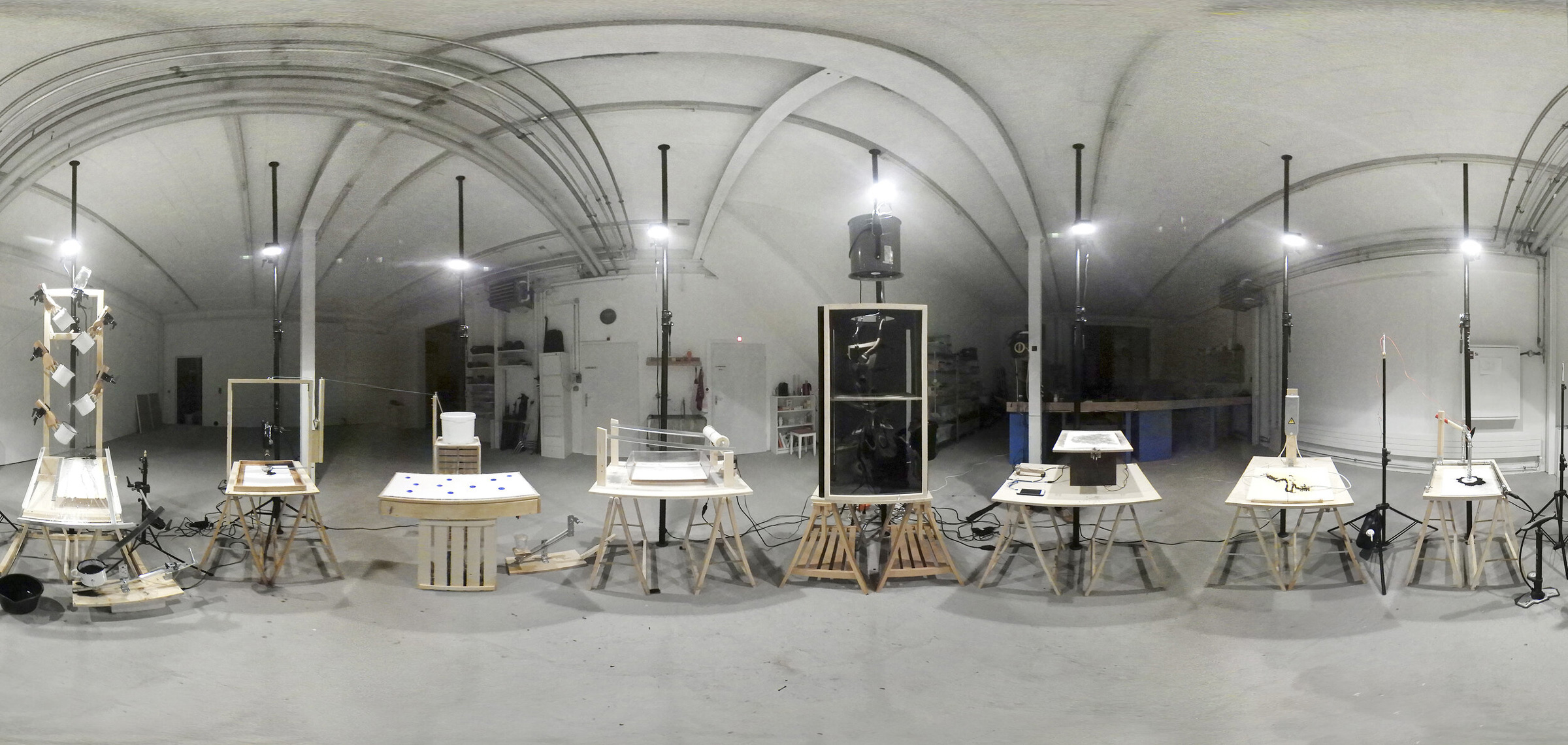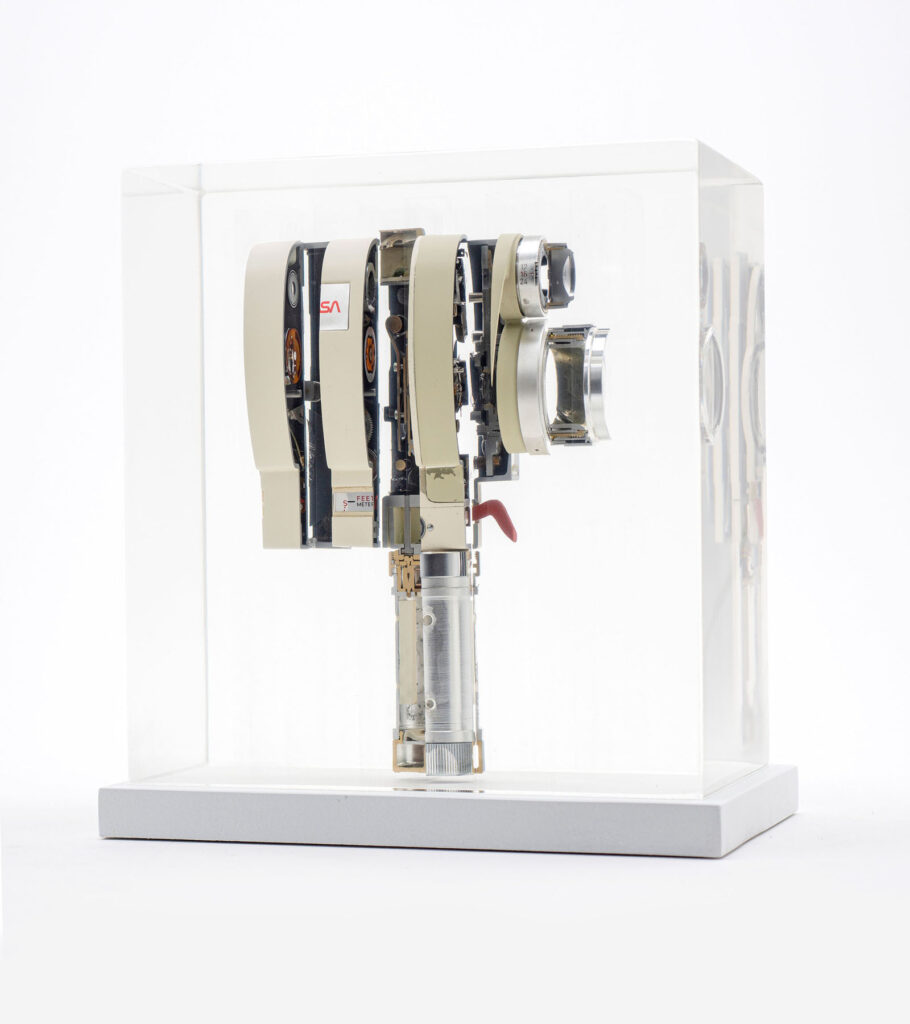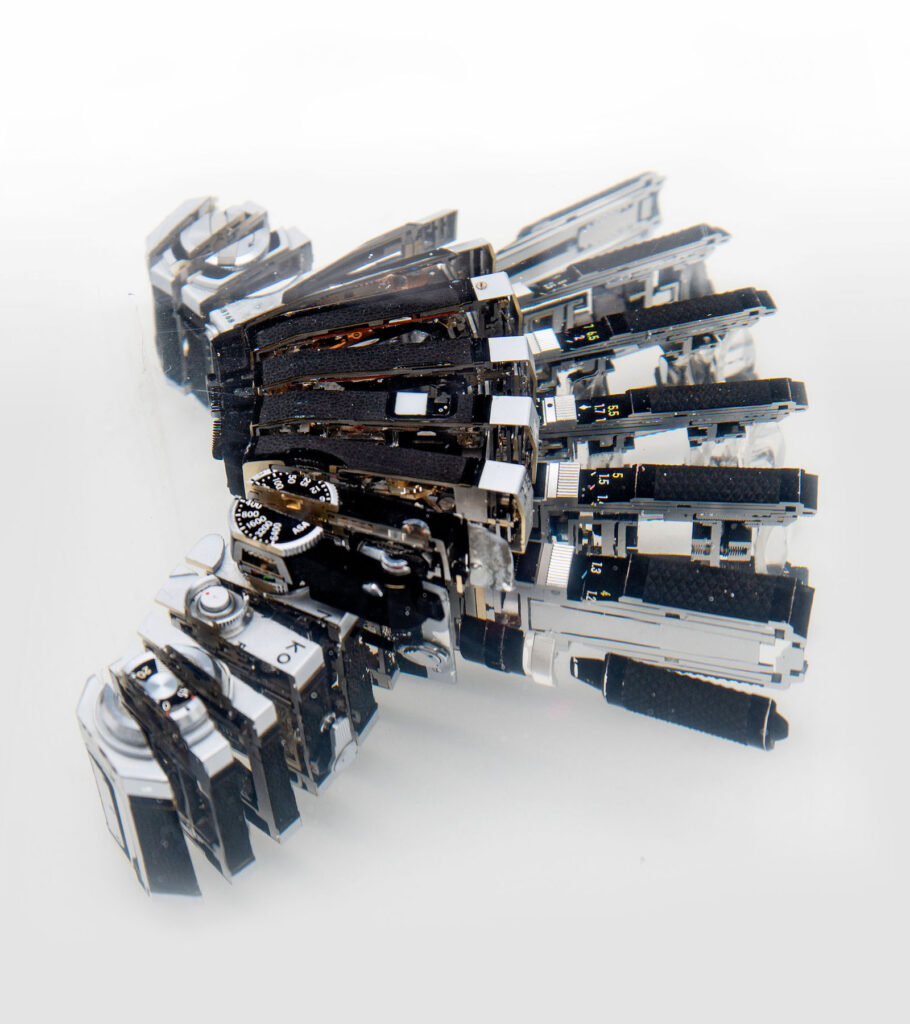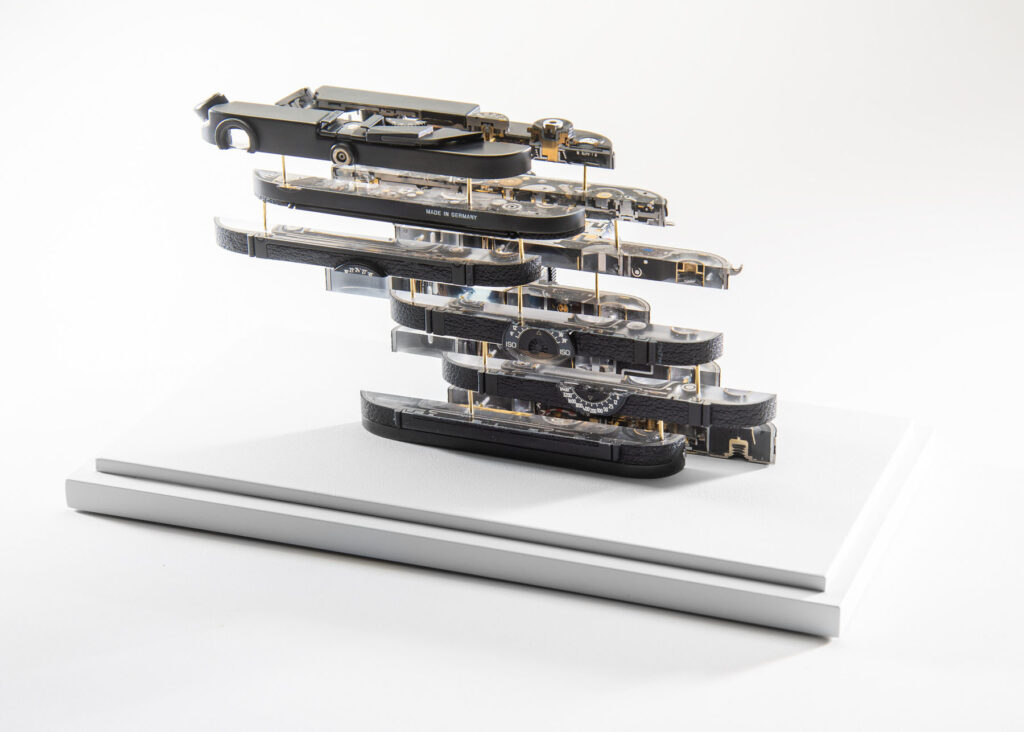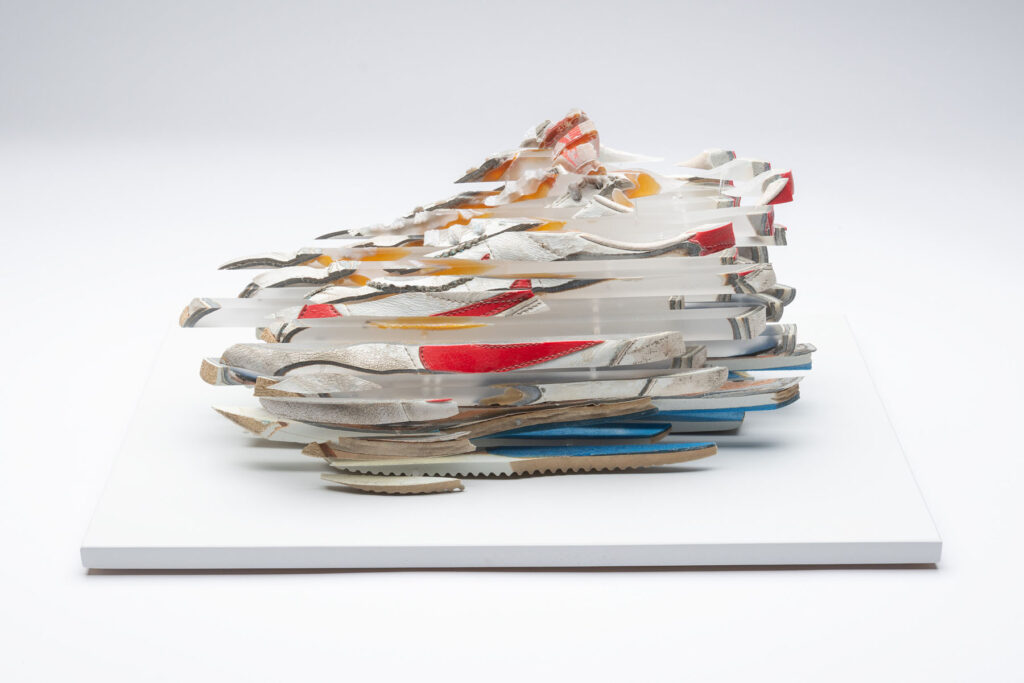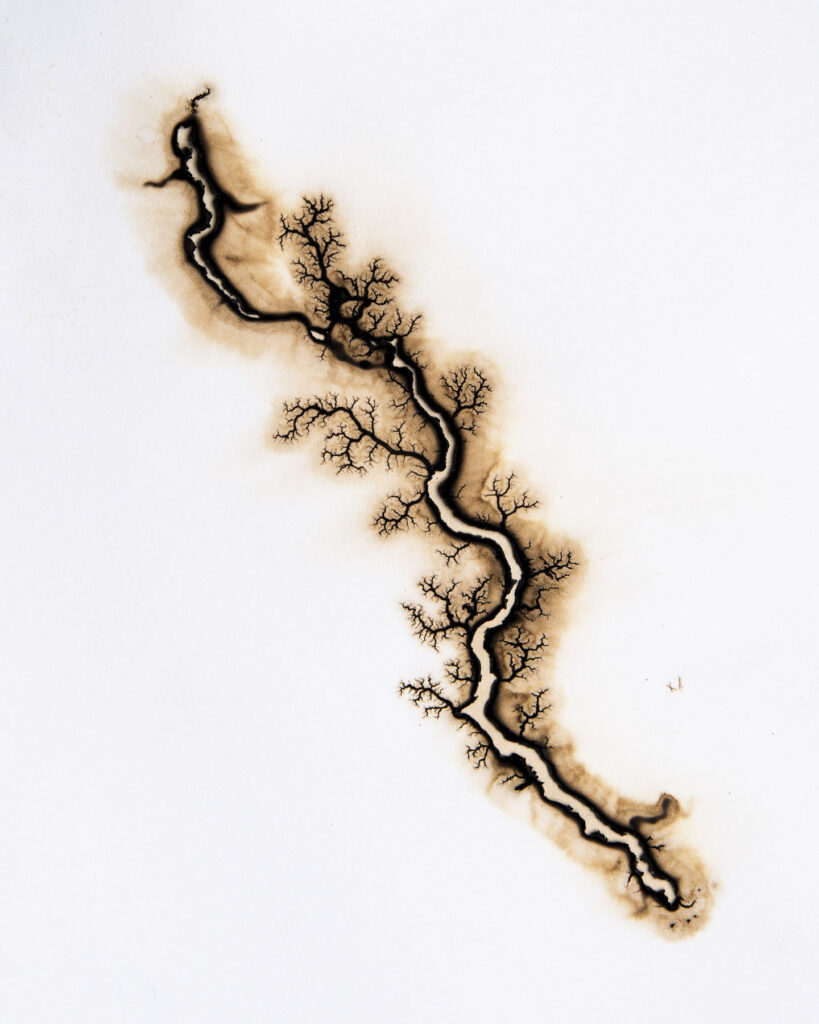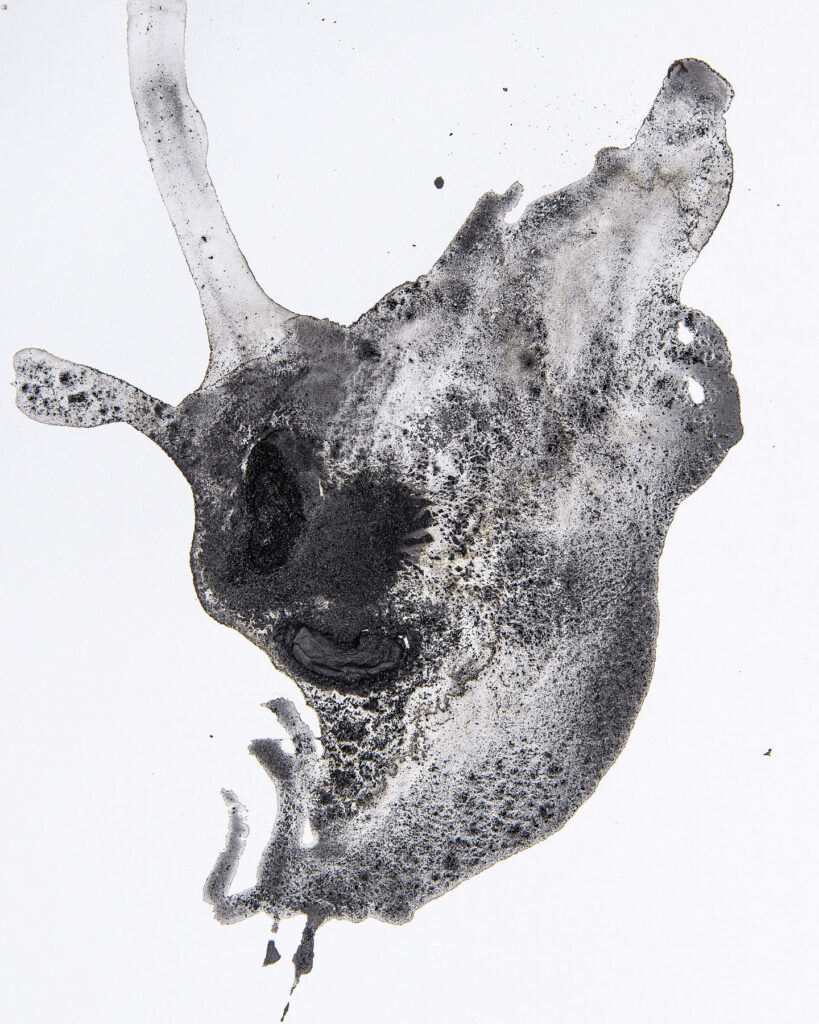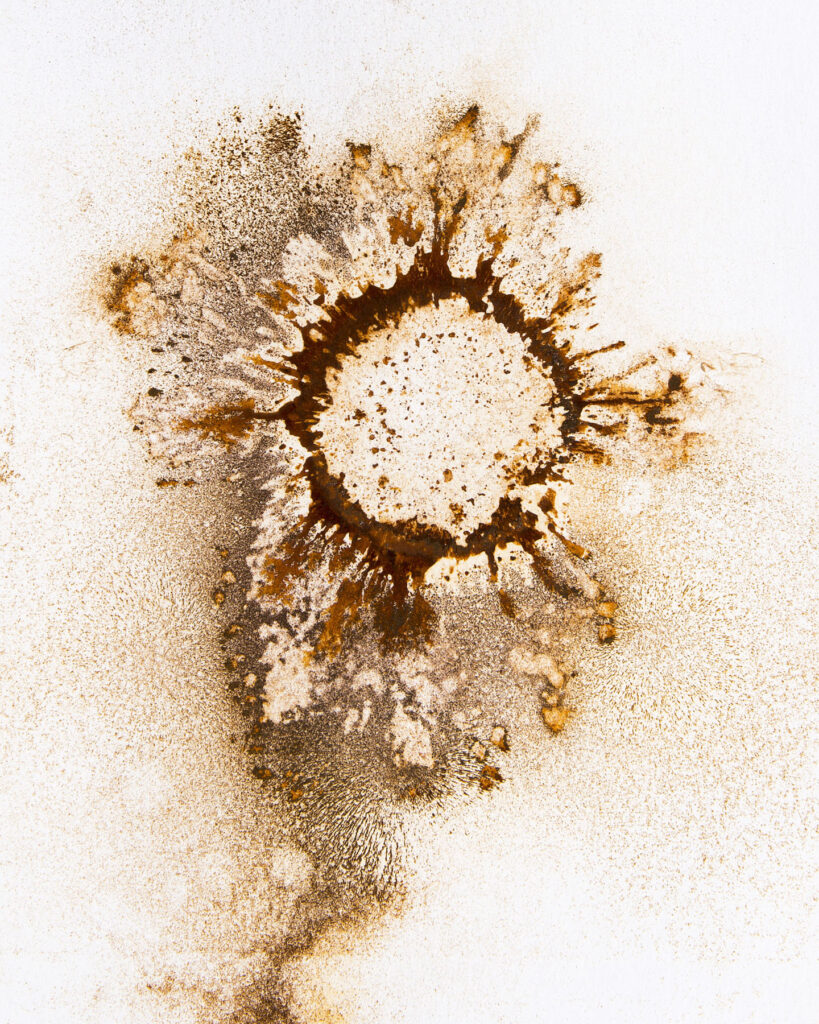
Amia Yokoyama, Słow Moon Sink
Ceramic
“What the immaterial creates, the material makes“
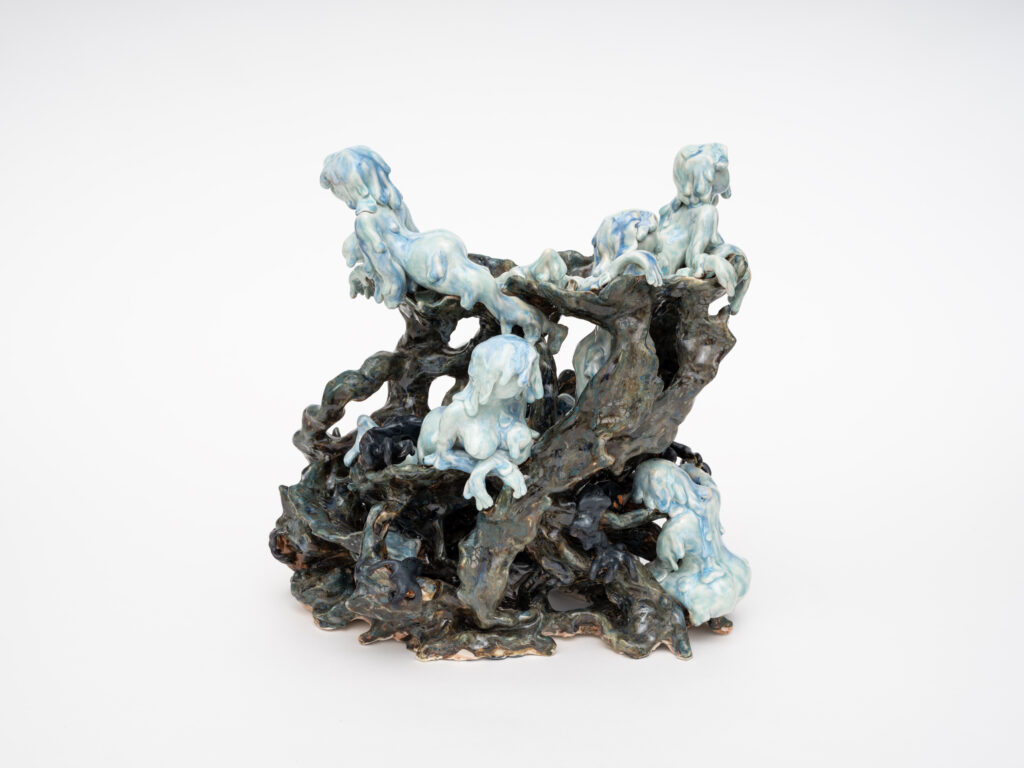
Amia Yokoyama, Słow Moon Sink, ceramic
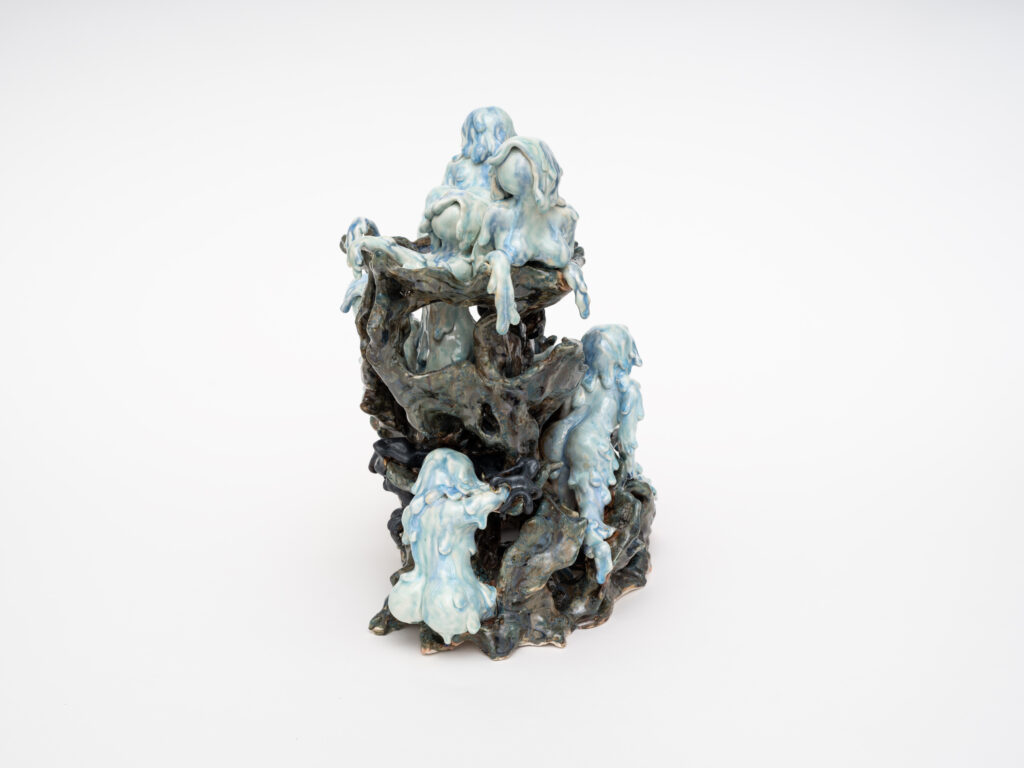
Amia Yokoyama, Słow Moon Sink, ceramic
The lack of contentment governs the persistence of Amia Yokoyama to unfold the transaction between permanence and impermanence, fragility and strength. She tells NR about the void she desires to fill with whatever gnaws at her at the time she falls under its spell. She always seeks something, always on the hunt to uncover more, the reason she keeps sculpting and producing videos and animations. Somewhere between these works of art, she finds the depth of herself, the truth she owns that lies within the realms of her material and immaterial creativity. When she describes her practice, she lends her audience a piece of herself, and they soon realize the fidelity she upholds, questioning the elements of the Earth, the states of matter, the spaces that live within the physical and the memories, and the existence of layers in the digital world.
Whatever theme she touches upon, she borrows from other cultures, such as the prowess of Anime in Asia, to magnify, and sometimes distort, her objects, videos, and installations. In one work, viewers can find two naked feminine figures in euphoria as one caresses the skin of the other, beneath her breasts. In another work, a talk show occurs, hosted by two tech-driven figures who look the same. The Japanese-American artist gravitates towards pyschedelic approach to her practice, offering drugs to satiate the high-maintenance affairs of her viewers towards modernized, digitized, and sensual art. For NR, she taps into the poetess in her, layering the narratives about her art, self, and beliefs in a nature that reflects what she creates.
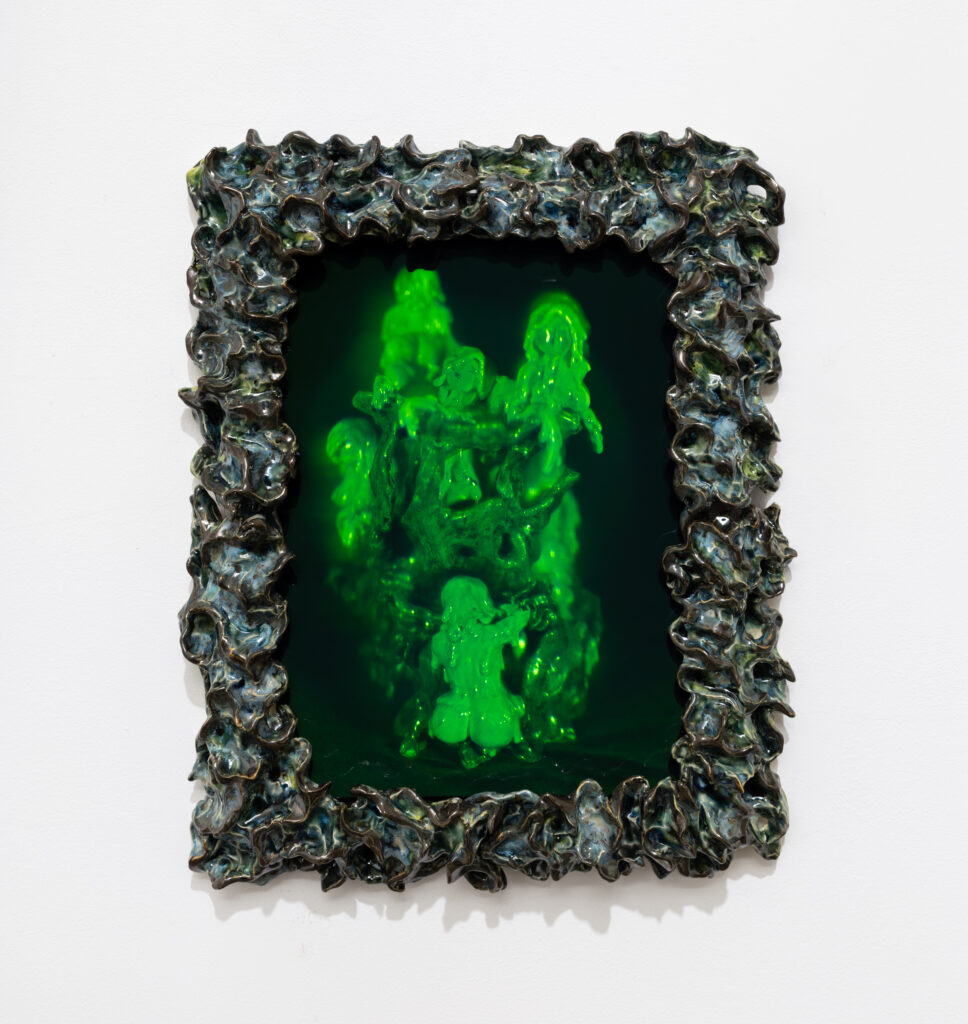
Amia Yokoyama, Untitled (green) Ed 1, 2022
Ceramic, glass, holographic print, wood
and epoxy
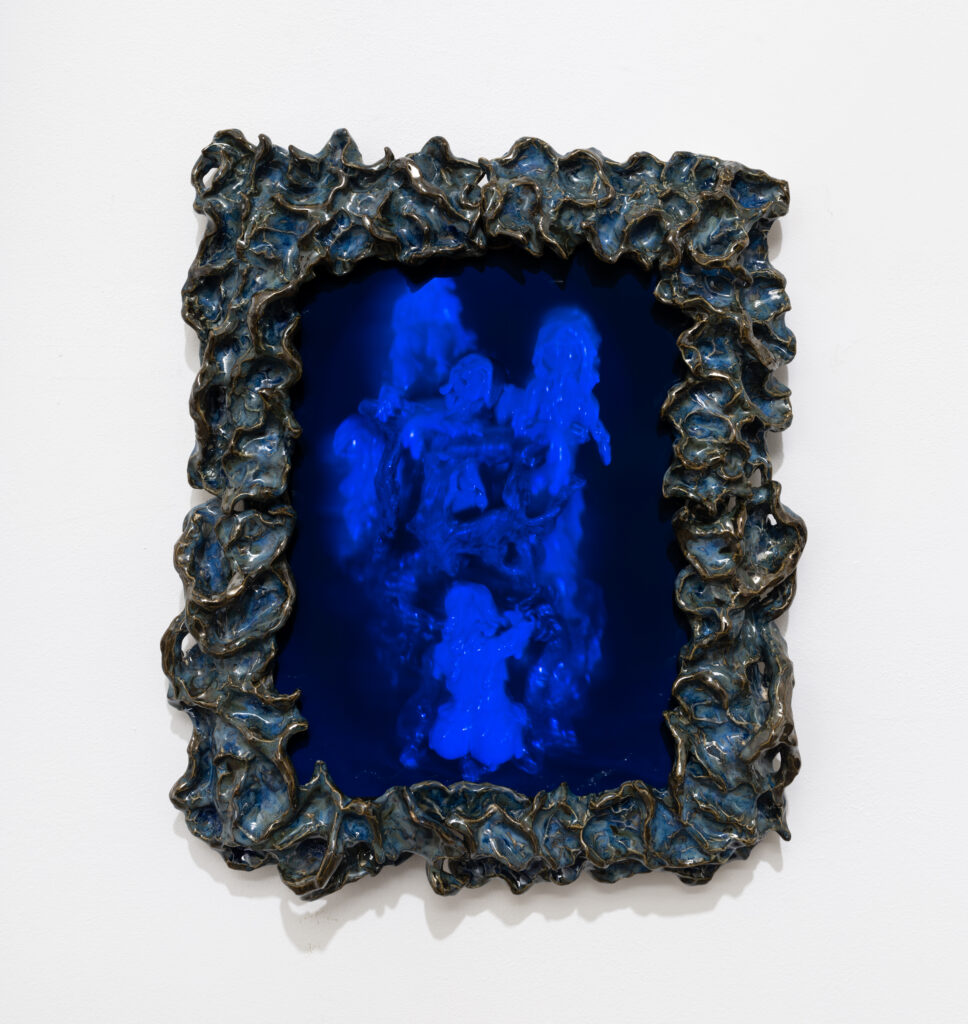
Amia Yokoyama, Untitled (blue) Ed 1, 2022
Ceramic, glass, holographic print, wood
and epoxy
Amia, how has your journey been so far with your work? Was it easy achieving the creative process you have today?
It has been long, unruly, twisty, and unpredictably slippery at times, but I would not have it any other way. My process has been guided through searching for moments that trigger my creative spirit. These moments are the catalyst for my motivation. I get excited when these senses are tickled simultaneously like intellect, feelings, sensory, emotions, beauty, and tension, to name a few. When all of these are activated as I work, I know I am on the right path. If they are not, I keep searching.
“This journey means reaching for a visual language that can sing when lyrics alone do not quite cut it.”

Amia Yokoyama, Untitled (red) Ed 1, 2022
Having a Japanese-American profile, in what ways do your cultural background and upbringing influence your art and the way you make it?
I think that my early acknowledgement of my childhood and the feeling of not belonging encouraged a propensity to imagine and create worlds where I did feel I belonged.
“Inside my head, it was much more exciting, nurturing, and generous than my external social world.”
I began to develop my own relationship with my environment rather than a relationship that was heralded by my parents, teachers, or peers.
I grew up in a multicultural household isolated within a vast sea of homogeneity, so differences, misunderstandings, and uncertainties were regular companions. This gave way to always feeling and knowing I was sutured of diverse and often disparate parts that do not fit into the ways the world told me they should.
“This understanding left the needle and thread in my hand to sew, take away, and ultimately give permission to myself to be something of my own desire.”
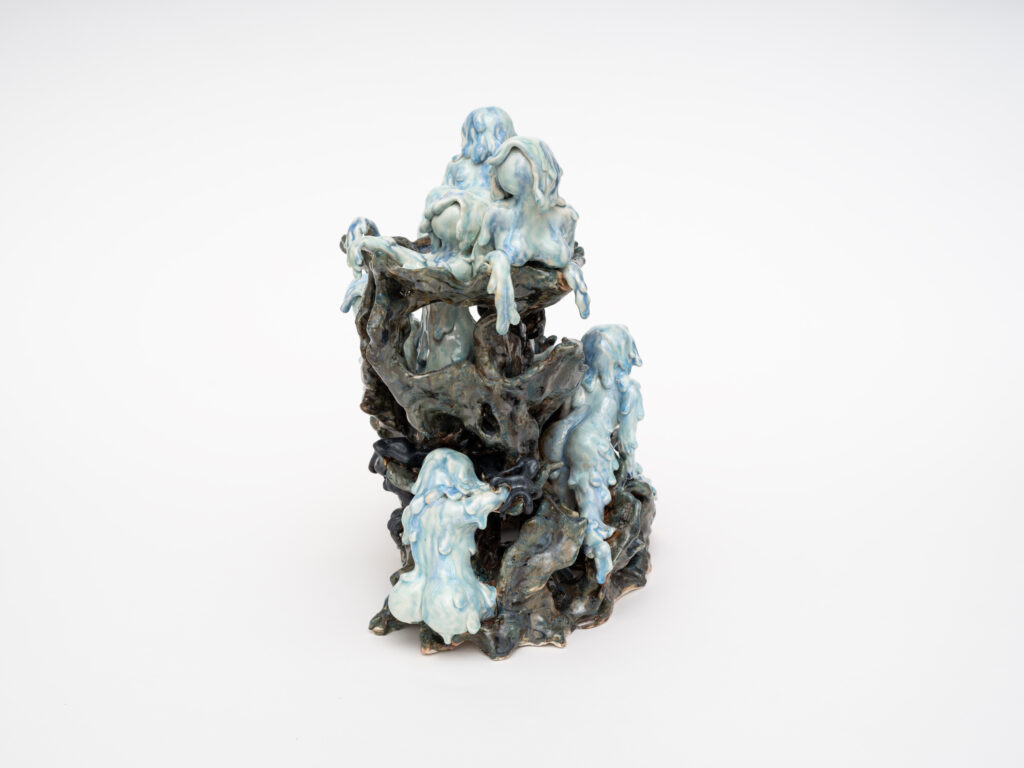
Amia Yokoyama, Slow moon sink, 2021
Ceramic
When the world told me that I did not make sense, I began the process of liberating myself from their idea of this ‘sense’ and allowed myself to expand the rules of existence.
“The childhood process of building sanctuary within my inner world has propelled me into my practice as if art were the overflow.”
Do you see the world – in general – as a symbiosis of humanity or dependent on self? Are you dependent on anything, artistically speaking?
Neither, or both, plus everything else. Humanity suggests a human-centric understanding of interdependency. I feel dependent on everything, all the spectrums of living and non-living things. I also know that the division between those two categories are not so exacting.
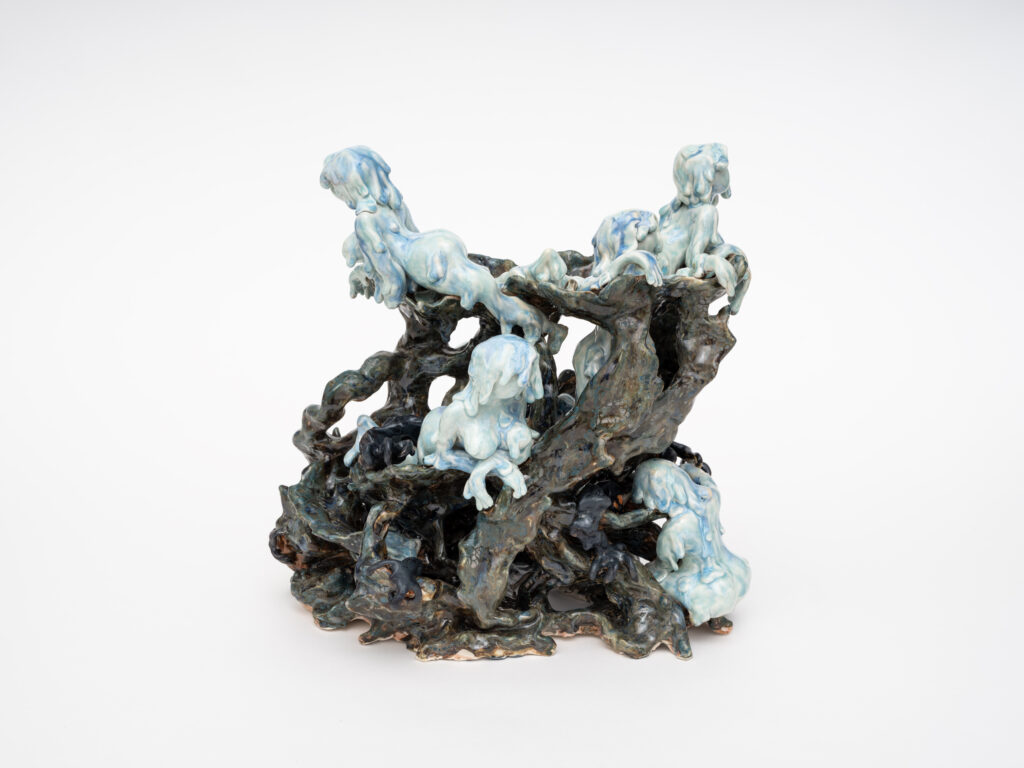
Amia Yokoyama, Slow mon sink, 2021
Ceramic
I see that you have this penchant for constant movement in all directions. Where does the affinity for this concept stem from? What is your opinion about those who map out their lifeline up to its finest details (go to college, find a job, earn money, buy a house, have a family, etc.)?
I have never experienced life as something linear. My experience in life moves in all directions, so I know nothing other than that. Being alive is ecstatic and chaotic with so many forces at play. I sometimes imagine it as a hurricane or a tornado whose energy needs humidity, dryness, coolness, and warmth, all happening at the same time.
Amia Yokoyama, In Our Embrace Eternal, 2021
Porcelain and glaze
The energy that I conjure feels like all those factors. They need to happen to create the core force that pulls things into the center.
“This movement, the tension between the core and the outer winds, is ultimately what gives the tornado its visible form, a form that can build and grow in this energy or dissipate just as easily.”
The idea I am trying to embody might be located at the center – in that stillness in the middle, the eye of the storm – but I may never arrive there. And if I do, it might only be moments before I am thrown back out again into the chaos of the surrounding energies at play.
Amia Yokoyama, Biding Time For Enrapt Demise, 2021
You have mentioned that when it comes to your art, you are not interested in judgment and relation. Could you elaborate more on that?
I believe you mean that I am interested in relation. Judgment is arrival, a fixed point, a decision, something definitive. Whereas relation is something that is more wayward and present, something interstitial. For me, that is the intriguing part.
Amia Yokoyama, Deliquesced in the Valley of Heaven, 2021
Porcelain and glaze
A sense of femininity and feminine prowess is present in your sculptures. The softness and hardness of the edges complement, an overview of Yin and Yang. How do these concepts influence your life as an individual? What other themes do you convey in your sculptures?
With clay, there is a loud and constant negotiation between permanence and impermanence, fragility and strength. There are moments of transformation that happen throughout the process, when earth and water come together, when the air hits the water, and when the fire hits the earth. This flow between states of matter or the shapeshifting of material identities is something I feel connected with.
With my video and animation practice, it swings between dimensions, materializing and dematerializing from 3D to 2D space, back into 3D, sliding into 2D again, and back and forth.So much of my existence resonates with this multi-dimensional translation. When these various modes of existence play out at the same time, and this back-and-forth is engaged, there is an illusory or almost binaural experience where the mind simulates something that is obviously not there in a physical sense.
“This is the space where the alternative forms of being are born. This is the place I seek.”
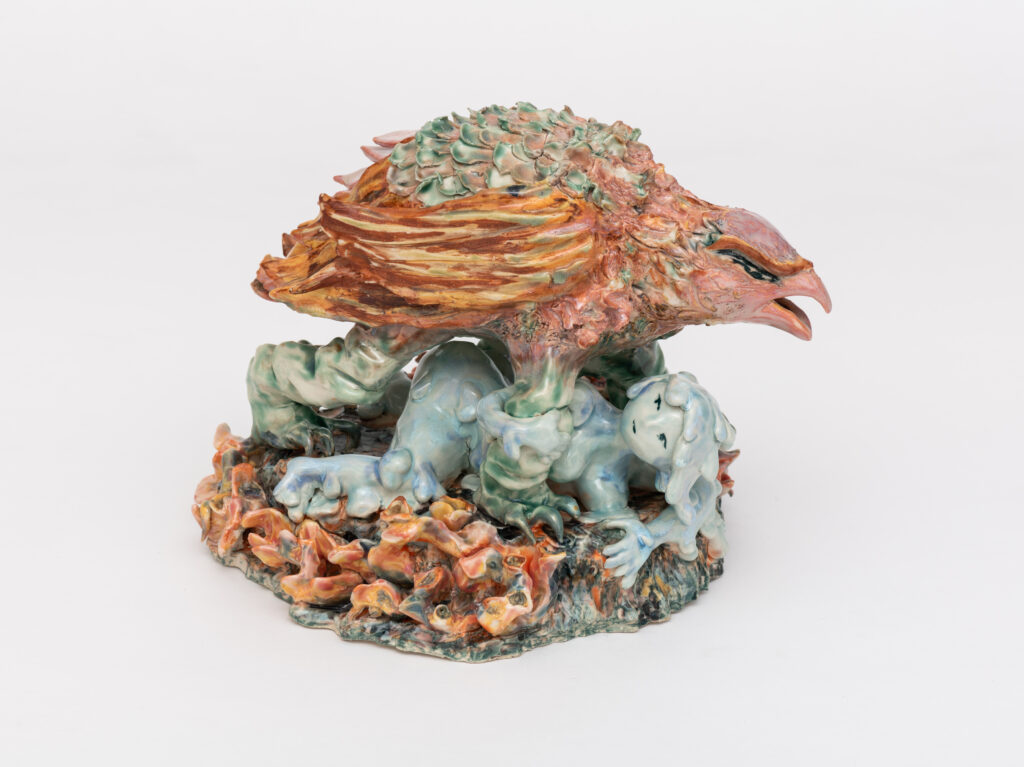
Amia Yokoyama, Harbinger (Tengu), 2022
Ceramic
“I am interested in another layer of existence which is the dematerialized, the digital, and the fragmented projections of the self.”
The characters in my work come from notions of digitally rendered, animated, non-human figures bearing feminine shapes. They are Anime-inspired erotic and aesthetic objects that can traverse existence between the physical (clay) to the digital (dematerialized).
Anime is one of the most visually distinctive, largest exported and consumed contemporary media from East Asia. They embody borderless beings who increase their collective life force through rhizomatic reproduction. They are an amalgamation of bodies, fluid, and overflowing desire and excess.
“The portion of their bodies seduces by promising ecstasy and ultimately death.”
They are literal and abstracted in their philosophical underpinnings and poetic in their materiality.
Going through your video installations, your works engage the meeting between utopia and dystopia. How do you conceive these realms? Are they based on personal or external experiences?
I would say they are based on both my internal and external experience and perhaps even more so where those distinctions begin to overlap. I do not think of the concepts of dystopia or utopia when I am conceiving of these realms. I think of them more as personal mythology.
“Utopia connotes perfection, and perfection has no place here. Dystopia connotes something harmful or undesirable.”
That being said, I do like the literal translation of utopia – “no place” – as if it were a space of refusal.
Amia Yokoyama, Measure Wants the Seam, 2021
Porcelain and glaze
How is your artistic world unfolding these days? Is there anything missing that you want to look for? Also, how would you like your art to influence the world?
There is always something missing, always something I am looking for, always more to uncover, which is why I keep making. I like to keep the carrot on the string and the garden growing within the trampled ground beneath me, you know?
